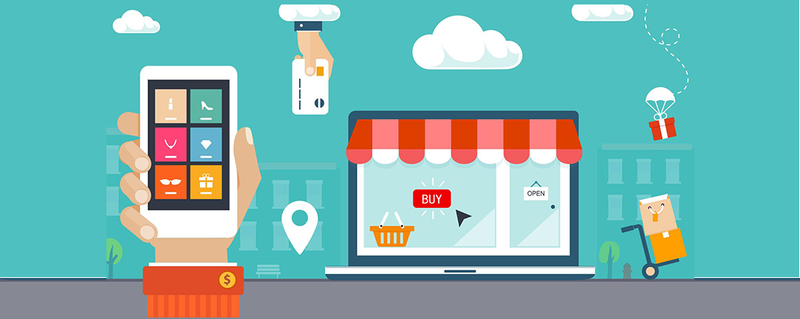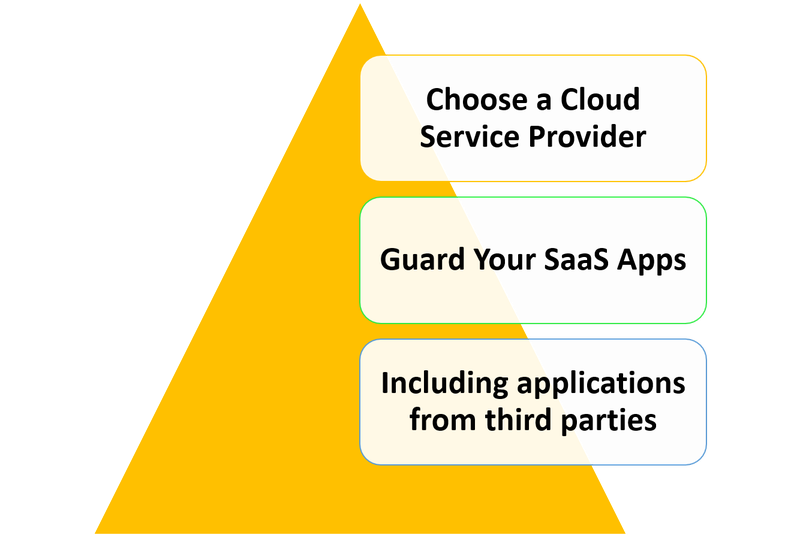Building SaaS E-Commerce Apps: Process, Challenges, and Benefits
SaaS-based e-commerce apps are gaining ground due to their straightforward development approach in addition to their cost and accessibility advantages. This cutting-edge approach to commerce app development is being used by lots of digital businesses and online retailers. They all have valid justifications for doing so. SaaS facilitates quick setup and operation, allows for adaptable pricing structures based on subscriptions, is simple to adjust, and has practically endless expansion possibilities.
What thoughts sets SaaS-based e-commerce app development apart from more conventional approaches? Continue reading this blog to get the answers to these and other pressing questions for both investors and ecopreneurs.

What Are Some Quicker Ways to Design and Launch a SaaS-based E-Commerce App?
You could be tempted to build a SaaS-based e-commerce app right now because of the many benefits, but you should first think about creating a SaaS MVP. A minimum viable product (MVP) is a prototype or early iteration of a new product that only includes the features required to satisfy the needs of potential customers and collect feedback for further product development.
By developing a SaaS MVP, eCommerce organizations may test their ideas and goods. The five steps you must take to accelerate the launch of your SaaS eCommerce MVP are listed below.
1. Establishing an agile development team:
For a well-balanced project, an agile team should include both new and experienced members. The more seasoned team members can handle the more challenging tasks while the newer ones concentrate on the fundamentals. The team will be able to utilize this feedback to modify their work after the project is finished.
2. Use of proper tools for effective team collaboration:
MVP development can be sped up by team members working together and communicating. Teams can communicate about workflows and deliverables using tools like Slack, Trello, and others. When everyone is informed of the status of each team member, tracking everyone's progress becomes considerably simpler.
3. Make analytics a part of the plan:
Customer research is key to creating a SaaS-based e-commerce MVP since it reveals the most crucial features and uses cases for the product. As soon as you have them, integrate your data with a prioritization structure and pertinent analytical tools.
You can utilize the data produced by the study to make data-driven decisions, such as conducting A/B testing. You can use Google Analytics, and Google Forms at this stage of the procedure.
4. Concentrate on The Key Features of the App:
Applications for online shopping are completely customizable. You may utilize a number of distinctive characteristics to make your app stand out. On the other side, an MVP is all about giving the most crucial features top priority. Therefore, make it straightforward by including the following three elements:
- The user interface (UI) must be clear, uncomplicated, and simple to operate.
- Allow users to choose when and how they want to interact with their data.
- It is best to confirm that the data visualization is accurate. Try to visually appealingly convey the material so that everyone can grasp it.
5. Make your target audience feel important
Making an MVP is all about developing a new product prototype and soliciting feedback from customers to enhance the finished item. Therefore, you must include their comments in the development process if you want to guarantee that your customers get the most out of your eCommerce app.
Because of this, you must keep your customers informed throughout the development and testing phases. If you can do this, your product will be able to alleviate customers' problems and offer genuine value.

SaaS Advantages Over Traditional Apps
The creation of cloud-based applications that users may access through web browsers and mobile applications is referred to as "SaaS development." SaaS is different from conventional software in a number of ways, one of which is that it is housed in the cloud.
- SaaS is hosted in the cloud, whereas traditional software is stored on the client's local servers and hardware.
- Businesses and other clients can subscribe to a SaaS and utilize it as much and as long as they'd like. On the other hand, license software is an immaterial, invisible asset owned by the user. It is typically paid for up advance.
- A SaaS can be as comprehensive in breadth and functionality as necessary for the user experience because there are no storage space restrictions. This isn't a problem with other applications and apps because the RAM of the device is a consideration.
Challenges To Take Into Account Before Creating A SaaS Application
The construction of SaaS apps is distinct from the development of conventional apps, which costs a one-time price. A few factors need to be kept in mind before the development process starts.

1.Choose a Cloud Service Provider
SaaS apps would not be possible without cloud services. Therefore, picking the ideal cloud service provider is essential for the success of your SaaS project. Fortunately, you have a lot of options to choose from. Whether you use a local service, AWS, Azure, or Microsoft depends on you. Before selecting a choice, bear the following in mind:
- Picking the best security services for your goods is a crucial factor.
- How much cash can you set aside for cloud services?
- What products or services does a supplier provide that your business needs? Examples of these include hosting, file storage, databases, and management services.
- Market coverage determines whether or not your service provider is present in your community.
2. Guard Your SaaS Apps
In the SaaS sector, security databases are a constant. Security issues with cloud storage of data are two times greater than those with regular database storage. Thankfully, cloud service vendors frequently address security issues. Cloud computing service provider Amazon Web Services (AWS), Azure, or Microsoft offers a variety of security measures, including the capacity to control public access and keep an eye on public repositories. These kinds of services include firewalls, public access settings, and honeypots.
3. Including applications from third parties
The creation of a SaaS application requires addressing a variety of user needs. The bad news is that hand-coding costs a lot of money, time, and effort. The good news is that you are not required to. You might employ services offered by other businesses rather than starting from scratch. For instance, you might notice this in a variety of applications like Google Maps, social media sites, CRMs, or payment services.
Conclusion
It would be preferable if you promote your SaaS MVP to your target market once all of these procedures have been finished and it is ready for launch. Creating a marketing campaign that resonates with your target audience is essential for its success. We sincerely hope that this article has improved your understanding of the SaaS eCommerce app development process!
Contact Decodermind's specialists right away for more information!

 Hamid Salman
Hamid Salman